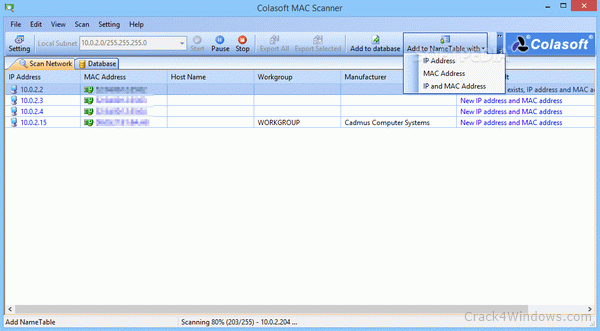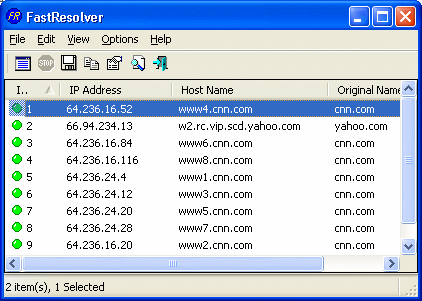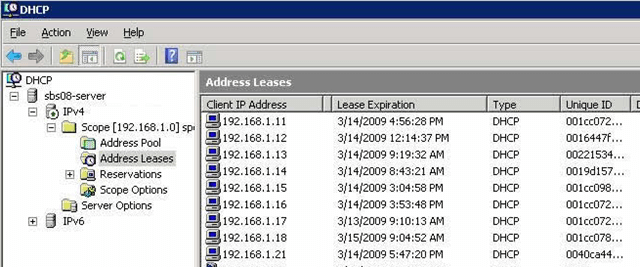Network scanning is a necessary task, but it can start off simple and rapidly become more complicated as your business gets larger. Manually finding IP addresses on your network is possible, but why do it yourself when there are so many tools to help you? Not only can network scanning tools help you find IP addresses, but they can also provide extra information for monitoring, troubleshooting, and keeping your network running efficiently.
My top choice for a network scanning tool is the SolarWinds® IP Address Manager, as it works in an intuitive and easy-to-use way while offering a broad suite of tools and functions. It’s more approachable than some of the other tools out there and has a flatter learning curve for figuring out how to get started.
How to Find IP Addresses of Devices on My Network
This is the portable version of MAC Address Scanner, a fast and easy-to-understand program which scans a single host or entire network for MAC addresses by IP range. This command will scan your network from 192.168.0.1 to 255 and will display the hosts with their MAC address on your network. In case you want to display the mac address for a single client, use this command make sure you are on root or use 'sudo' sudo nmap -Pn 192.168.0.1 this command will display the host MAC address and the open ports.
Curious how to find IP addresses on-network? You may need to know about either static or dynamic IP addresses. If you can access your router, you may be able to simply view the client lists and get information like hostname and MAC address. Or you can use a device connected to the network to ping the network and view the ARP tables. Done manually in this way, you have to do everything through the command line. Use the prompt “ipconfig” on Windows to get network settings, followed by “arp -a” to view IPs plus MAC addresses.
However, this method doesn’t work across subnets. This means that if you have multiple subnets on your network, you have to go through each individual router or subnet to determine the IP addresses within the subnet. It becomes pretty clear as your network scales, manually scanning for IP addresses becomes an extremely complex task. Multiple subnets and an ever-changing string of devices connecting to and disconnecting from the network becomes problematic.
Instead of attempting to manually manage these aspects of your network, I recommend using an IP address manager (IPAM). These tools help you to manage your IP addresses and troubleshoot problems, but they also help you to find all the IP addresses of the devices on your network and determine the status of each one (dynamic, static, available, reserved, etc.). Some tools will also integrate with DNS and DHCP, and all of them will usually present data in a visual, interactive format. Many also allow you to save your network scanning results and present them in spreadsheets or reports.

Best Network Scanner Tools 2020
SolarWinds IP Address Manager
This is my top choice for network scanning software. The SolarWinds IP Address Manager (IPAM) with its IP Address Scanner feature is great for both beginner users and small businesses, and expert network administrators and large enterprises. With automated IP address tracking and integrated DHCP and DNS management, you can quite easily monitor your IP addresses and associated network information.
You can also see all your subnets and how they are structured, and which subnets and scopes don’t have much free space remaining. It allows you to flag capacity issues before they become a problem so that IP address issues don’t affect performance. I’ve also found it’s easy to find unused IPs and reclaim them to tidy up my networks.
Find Mac Address On Network

Scanner For Mac Address Labels
This IPAM uses a clean and simple interface, without a steep learning curve like some other IP address managers. You can easily assign management or control permissions to other admins or admin groups, allowing you to delegate tasks simply within the IPAM rather than needing to use another tool. The console is centralized, allowing you to see all the relevant information in one place, reducing the potential for error.
I consider the SolarWinds IPAM to be a complete solution, and it’s my choice for an all-round lightweight tool you can use to scan and maintain your network. There’s a free trial available so you can try it out, then level up to gain access to more features and greater scalability.
MyLanViewer
This is another strong business-level contender for network scanner tools. MyLanViewer is an IP and network scanner, as well as a traceroute tool and network monitor. It uses a buddy-list style window to display all of your network computers, including important technical information about each one. It can scan your network to monitor IPs and let you know when any details change. It also supports remote shutdown and other remote functions for each network computer. It can monitor hidden devices on your subnets and discover bottlenecks in your connection with its traceroute tool. I’d say this is a fine choice for business use—it has an easy-to-use interface and is suitable for beginners and advanced users.
Angry IP Scanner
Looking for one of the best free tools? This is an open-source and free network scanning tool, with the ability to scan ports and IP addresses quickly and efficiently. The tool provides a report of data on each device on the network, including NetBIOS, MAC and IP address, computer name, and hostname. Keep in mind that open-source tools do require a bit more know-how on the user’s part and aren’t my usual pick for business use.
Angry IP Scanner can also produce reports in XML, CSV, and TXT format, which is useful for exporting data and other things within your business. Its unique feature is it uses a multi-threaded scanning approach, which uses a separate scanning thread for each IP address. This helps to improve the scanning process and make it more accurate.
Picking the Best IP Scanner


When I want to discover IP addresses on my network or scan for data generally, I tend to lean toward using a network scanning tool rather than trying to do it manually. Many network scanners have simple interfaces, and some go above and beyond in terms of ease-of-use and clean interface appearance. I like using the SolarWinds IP Address Manager, as it contains a pretty hefty solution in a lightweight package, with a free trial for people who want to try it out without commitment.
Network Scanner For Mac Address
Recommended Reading
Ultimate Guide to Network Monitoring: If you’re looking for more in-depth information on how to monitor and look after your network, take a look here for a beginner’s guide followed by more expert-level instructions.